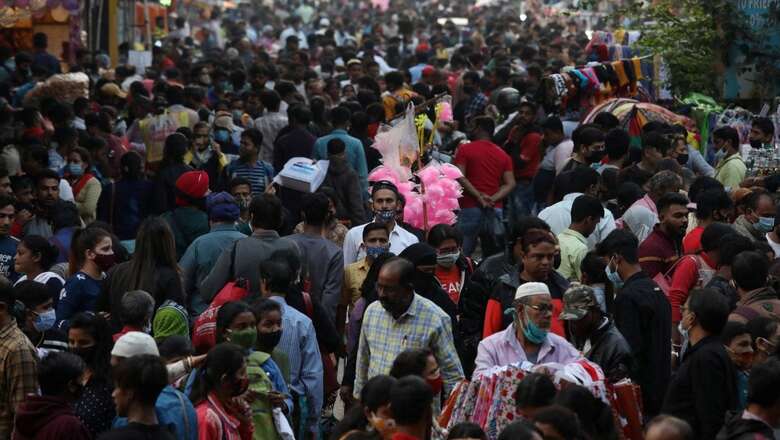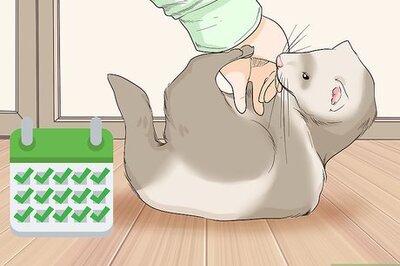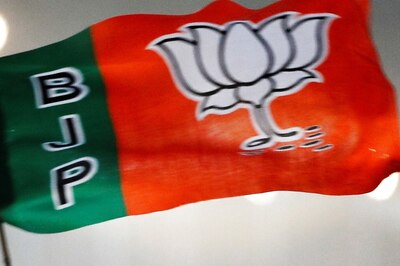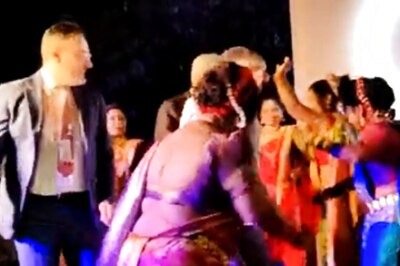
views
In Infra Vaani, noted urban infra expert Akhileshwar Sahay dissects infrastructural challenges of Indian cities and offers solutions. This week, he looks at Kolkata.
OH! CALCUTTA
Calcutta possibly had a humble beginning in 1690 on a sultry summer day, when Job Charnock leased three riverine villages – Kalikata, Sutanuti and Gobindapur — for East India Company.
Calcutta became Kolkata on January 1, 2001.
Now, the Calcutta High Court has decreed that Charnock ought not to be regarded as the founder of Calcutta, but indubitably, Calcutta is the gift of British to India – they gave it a distinct character, made it first metropolis of the Raj and India’s capital from 1773 to 1911.
Calcutta indeed became the modern India’s prototype hub of culture, renaissance, literature, reforms, science, finance, commerce, politics and entertainment.
My first tryst with Calcutta was on January 1, 1982, when I landed in the opulent Alipore, as a young probationer trainee of the State Bank of India.
It was love at first sight with the city of Joy.
In 1988, when I returned to work as a young railway officer in the decrepit Sealdah, the decay of Kolkata had begun.
Oh! Calcutta. Kolkata today is indeed dying.
But a born optimist I say: “It is not over till it is over”
CITY OF SORROWS
What a descent of the ‘City of Joy’ to ‘City of Sorrows’.
Although the etiology of this decay is complex, this piece is about most palpable symptoms of the malady – its crumbling infrastructure.
But before that a peep in the ultimate existential threat facing
GOING DOWN UNDER
Kolkata faces a possible extinction sometime in the second half of this century due to global warming and climate change. It is at the forefront of global coastal metropolises under threat to be wiped out.
The UN Intergovernmental Panel on Climate Change in ‘Climate Change 2022: Impacts, Adaptation and Vulnerability’ cowritten by 945 global scientists has red-flagged possible death for Kolkata beyond 2040 due to multiple hazards, including double whammy of significant heat stress and severe cyclonic storms.
Mercifully, the report says that Kolkata can be saved.
The nostrum is simple — urgent composite decisive action.
Let me dwell deeper into the infra woes of Kolkata, what is the way out and how the city can be saved.
SHRINKING CORE- CRUMBLING PERIPHERY
First, Kolkata city is stagnant at a population of 4.5 million across 200sqm. It shrank in the decade 2001-2011. And Kolkata just lost India’s seventh most populous city tag to Pune and the fast-growing Surat will get past soon.
Why then is Kolkata India’s third largest metropolis?
Even after adding Howrah, Bidhan Nagar and Chandan Nagar corporations, the total does not add up – it is still below 80 lakh.
Kolkata is called the third largest metropolis due to Kolkata Metropolitan Area (KMA) (1887 sqkm), comprising four municipal corporations, 36 municipalities, and 24 Panchayat Samitis.
KMA’s 2022 population (as per UN World Population Prospects) is 15.2 million. By 2030, it will cross 20 million.
I posit: “KMC’s infrastructure is crumbling, KMA’s infrastructure never developed.”
GHETTOIsATION
Second, Kolkata urban form defies counting its slum population devoid of basic human rights — safe drinking water, toilets, sewage, sanitation and solid waste facilities and even roof over their head. “12 to 18 people stuffed in a 250-sqft room is the norm.”
Consensus says that 35% of Kolkata’s population which means 18 lakh people live in the decrepit slums registered in 2011, and the 3,500-plus that are unregistered. In Howrah, it is over 50% and the larger KMA truth is scarier.
While urban India has begun slum rehabilitation, Kolkata still is busy with the unfortunate on the impossible task of slum eradication. Ghettoisation is the net result
OLD CAPITAL, NEW CAPITAL
Third, Kolkata ceased to be the country’s capital in 1911, but a century later it returns as another type of capital — ‘India’s homeless capital’.
Kolkata, as per the 2011 census, had 70,000 homeless, up from 55,000 in 2001.
What is the 2021 number?
I say counting Kolkata’s homeless is more onerous than counting fish in the Bay of Bengal. My conservative calculation is Kolkata, with 20 homeless per 1,000, has dethroned Kanpur (15 in 1,000) as India’s homeless capital and relegated Mumbai (12 in 1,000) to the third rank.
And this is understatement because as part of my existential calling, for years I have spent nights on Kolkata streets trying to assess the number of homeless on streets, under flyovers, within and outside railway stations, bus stands and other public places, including public libraries. These are humans in subhuman existence — destitute, rag-pickers, migrant-laborers, rickshaw-pullers, vagabond, beggars, mentally ill men, women, and children.
Homeless of Kolkata are no one’s concern.
GETTING DROWNED WITHOUT WATER
Four, if Kolkata survives drowning under water, it will die without water.
The paradox is despite perennial Hooghly (Ganga) flowing in its West, wetlands galore in the East and plentiful groundwater that can treat city’s wastewater to turn it raw water for agricultural and fishery uses, Kolkata may sooner die without drinking water.
It is the ultimate travesty.
Kolkata does not provide 24×7 water even to its wealthiest, but worryingly its 65% population has no municipal water supply, even those who have municipal water still make their alternative arrangement. They don’t trust the municipal water quality.
Water poverty of Kolkata has both socioeconomic and spatial inequity, as the destitutes suffer the most. Spatial inequity worsens with increasing distance from the core — peripheral wards suffer the most, with eastern periphery being extremely vulnerable.
Root causes of worsening water poverty are all man manmade such as inadequate, intermittent, short duration, low pressure, municipal surface water supply through antiquated distribution lines.
These allow water to mix with sewage and other contaminants with fatal health consequences. In March 2021, in municipal ward 73 (Bhowani Pur and Kalighat), three persons, including a five-year girl, died and 15 were hospitalised with serious ailments after drinking sewage-infested municipal drinking water.
This is tip of the iceberg.
Kolkata water crisis is essentially manmade — structural and operational inefficiencies, poor water resource management and poorer water governance.
The current state government in 2011 abolished water tax. The city has no water metering that leads to predatory misuse of water. And with 35-40% daily water distribution loss, Kolkata is among India’s worst.
Also, Kolkata is a water guzzler. A Jadavpur university study (2020) found that water demand doubled to 13.5 million litres in Kolkata shortly after the advent of Covid. And the real problem is no one really knows how much per capita water the city consumes daily. The Telegraph in 2018 based on a pilot project of water meters installed in 1,000 households in wards 2 to 5 in north Calcutta published a shocking report: “The average water consumption was 600 lpcpd and in some households even 800 litres.”
And the national urban benchmark is 135 lpcpd. Chennai survives at low 80 lpcpd, Bangalore with 100 litres and Mumbai with 170 litres.
With such waste of municipal surface water by the core of the city, the peripheral, fringe, newly developed areas and urban poor have taken to the vengeful overexploitation of the groundwater with disastrous consequences.
The first consequence is ground water contamination — manganese far more than permissible 0.3 mg/l, alarmingly high iron even up to 23 mg/L (permissible 0.3 mg/L) and serious arsenic levels — all exposing the population to life-threatening debilities and illnesses.
The next, based on a KMC report about a fall in groundwater level to 11 metres from 7 metres, an Anna University, Chennai study has estimated that Kolkata is sinking at an alarming rate of 12-18 mm per year.
In addition, the rampant groundwater over-extraction exacerbates the risks of earthquakes among other geological tragedies.
Why then such suicidal groundwater over-extraction?
Firstly, water double use. Despite municipal water connections supply, rich in old and inhabitants in newly constructed apartment complexes, pump their own groundwater. The reasons vary, but include distrust of municipal water quality.
Secondly, for those in peripheral wards, groundwater is the sole option. Two-thirds of the non-slum population pumps its own water.
Thirdly, a large section of population depends on “water man” to fetch drinking water. Later, they overexploit both the groundwater and municipal stand posts.
Lastly, massive urbanisation-led water demands, concrete pavements denying the percolation of rainwater, wastage of treated water and non-segregation of city waste make matters worse.
In 2002, when I was the Team Leader of the World Bank study on urban and rural drinking water sector reform in Maharashtra, I discovered that the user was willing to pay, but the government refused to charge for water.
Kolkata citizens were paying water tax without demur. Then came 2011, and with it Didi Raj, where she abolished the water tax altogether.
Water is God’s gift to Mother Earth. God will save Kolkata when it drowns without drinking water. And KMA crisis resolution will need the avatar of new God.
BANE OF TWO CENTURIES
Fifth, while water crisis is the post-independence malady, sewage, sanitation and drainage crisis have been Calcutta’s bane for two centuries plus.
I tell this tale through three reports:
Firstly, in 1803, in a report, Lord Wellesley, Governor General of British India castigated Calcutta’s extremely unhealthy sanitation and faulty drainage system.
He wrote: “The construction of public drains and water-courses of Calcutta is extremely defective…it neither answers the purpose of cleansing the town, nor of discharging inundations occasioned by rise of the river, or by excessive fall of the rain during, south-west monsoon… Experience has manifested that during rainy season, when the river has attained its utmost height, the present drains become useless; at that season the rain continues to stagnate for many weeks in any parts of the town which necessarily endangers lives of all Europeans residing in the town, and greatly affects our native subjects.” [Edited for brevity]
This report should have catapulted Calcutta sewage system to the European best.
It did not happen.
The best of British experts came. Committees got appointed. Competing proposals were produced. But not much happened, the reason adduced was the lack of money.
But whatever little wastewater, sewage and sanitation system Kolkata has today, it is what the British created mostly 150 years back
Secondly, a 2012 report of Centre of Science and Environment, Delhi.
It said: “One, Kolkata needed to do its utmost to protect East Kolkata Wetlands as without those wetlands, the city will drown in its own sewage- they are city’s natural waste disposal systems saving Kolkata estimated Rs 400 crore a year in water treatment costs, handling 810 million litres a day (MLD) of wastewater and critical for city drainage through an intricate system of canals.
Two, like Lord Wellesley, CSE report found city sewage system grossly inadequate system to deal with wastewater and the rainfall Kolkata received, it also found 60 percent trunk sewers in city’s core area silted, most more than 150 years old and pumping system in disarray with even spares for older pumps unavailable.
Three, the city had just three sewage treatment plants (STPs) with 125 MLD total capacity as against gargantuan treatment need – 1,100 MLD (as per municipal corporation) and 734 MLD (as per Central Pollution Control Board).”
I say even above CSE report though authentic, is an understatement- one needs an honest, full sewage system audit of Kolkata.
And the government acted. ADB came. Sewage Master Plan 2035 for Rs 9150 crore was crafted. But no solution came. Also, there was nothing in the plan to save wetlands.
A dirt cheap plan of saving wetlands has no political takers. Kolkata is repeating Chennai’s mistake. High cost and often unworkable solutions excite political class because they allow rent-seeking.
The year 2022 is here and Kolkata has no plan how not to mix its wastewater and sewage and the two with the drinking water.
Kolkata thought, and wrongly so, that the ADB money would buy its sanitation future.
Thirdly, the 2022 report of UN Intergovernmental Panel for Climate Change repeats Kolkata sewage, wastewater and drainage are inadequate and the city is frequently getting flooded due to inadequate drainage and sewer networks, which do not serve the city’s whole population. It also rued where infrastructure existed, it was century-old with no capacity to meet current population’s needs.
The report warned: “Frequency and severity of these floods would likely increase while the future-proofing Kolkata against climate change, population growth and economic development is an immense challenge, particularly considering the scale of poverty and informality in the city.”
Lastly it added, the Kolkata Metropolitan Area did not have underground sewer system and hence drainage in these gets areas is affected by solid waste, particularly plastic. Moreover, outflow canals often get silted, covered with hyacinth, or even encroached upon.
Combining all three reports I say, two centuries have gone, grandiose plans are made, simple sustainable solutions ignored, and ground situation worsens.
Kolkata may drown later.
But I submit that it is sinking and stinking today.
If the city does not act today, tomorrow will be too late.
MOUNT CALCUTTA VOLCANO
Sixth, Calcutta is Kolkata now. But Mount Calcutta volcano is live, erupts almost daily and is killing by hordes.
Worse, it exists in the heart of Kolkata. It’s given name is Dhapa. Delhi Ghazipur and Bhalsawa solid waste landfills burn intermittently, but Dhapa volcano is perpetually active.
Let me first quote, MIT USA doctorate and the late Indian economist Isher Judge Ahluwalia , best municipal solid practices was her passion.
Her few comments are below:
“One, it is impossible to assess right quantum of municipal solid waste (MSW) generated in Indian cities. Two, rising incomes, rapidly growing, but unplanned urbanisation, and changing lifestyles are leading to increased volumes and changing composition of MSW in India. Three, managing continuous flow of daily growing MSW on daily basis is a monumental challenge. Four, far bigger crisis is dealing with the legacy of neglect which has resulted in garbage hills being built up at dumpsites that were originally allocated for developing landfills for safe disposal of only the residual waste.
My own research findings say, on all these MSW parameters, Kolkata is the worst amongst all Indian metropolises.
One, Kolkata from 1971 (0.51 kg/per capita/day) to 2021 (0.84 kg/capita/per day) has consistently generated more per capita MSP than any other large Indian city.
Two, Kolkata’s population is 4.5 million for the past two decades, but its daily MSW dumped at Dhapa daily is up from 3,000 MT in 2001 to 4,500 MT in 2021, i. e. 150%. Kolkata also dumps minimum additional 25% MSW daily on its street or drains. Its per capita daily MSW generation is way past 1 kg above many OECD countries.
Three, such high per capita MSW generation defies the conventional hypothesis that rising income and changing lifestyle bring more solid waste because socioeconomically, Kolkata is laggard among metropolises. Still, it is garbage king.
Four, in gross violation of Solid Waste Management rules, 2016, Kolkata has officially refused to segregate its waste at source so far. Understandably, it has plans to introduce source segregation in all 144 wards from October 2022.
Five, 4500 MT unsegregated waste goes daily to Dhapa adding already to a toxic volcano, although the landfill’s lifespan was over decades ago. It was set up in the eastern city fringe by British in 1941.
Six, Dhapa is extended part of Eastern Wetlands and exists illegally defying all regulations for a landfill.
Seven, once barren, Dhapa is now densely populated with close to 50,000 people, mostly rag pickers and waste collectors, with reported life expectancy below 50 years against India’s average 69.2 years.
Eight, Dhapa Kolkata is bad, but Belgachia, Howrah is worse with nearly 1,000 MT being dumped there daily. One can see a 60-ft tall waste mountain from a distance in Kolkata. Even Dhapa, when last measured by KMC in 2015, was less than 50 ft in height. Interestingly, Howrah has much less population than Kolkata. It dumps more on its streets and drains, still Belgachia is what it is.
Working solutions exist if one wishes to implement. Even segregation presumes waste generation with impunity. The cheapest sustainable solution is one of a circular economy with focused reduction in waste to minimum.
All other solutions have costs attached.
Those who live at Dhapa seldom die young. Dhapa will increase its death fangs wider.
If Dhapa residents dying before 50 years does not stir the heart of powers that be to swing into action, nothing will.
CALCUTTA CANCER: A LEAP INTO THE PAST
Seventh, I begin with Lord Curzon, then Viceroy of India, speech to Bengal Chamber of Commerce on February 12, 1903.
He said: “Sometimes almost makes one forget that this is an Asiatic capital, which besmirches the midday sky with its vulgar tar brush and turns our sunsets into a murky gloom. I am reluctant to see Calcutta, which has risen like a flame, perish in soot and smoke; and I may inform you that we have an expert from England, even now on the seas, coming out here to advise us as to how we may combat this insidious and growing danger.”
British experts came, and Bengal Smoke Nuisances Act of 1905 was passed to clear Calcutta lungs.
Soon, Calcutta was breathing again.
Even before Lord Curzon, in early 1860s, when Calcutta choked on its own emissions with constant smog in sky, the British and Bengali aristocrats forced the government to bring ‘The Calcutta and Howrah Smoke-Nuisances Act of 1863’ to introduce best practices to lower air pollution.
It made Calcutta only the second city in the world after London to clamp down on air pollution statutorily.
Pollution is again killing Kolkata.
And Kolkata is fast dethroning Delhi as India’s pollution capital.
At least Delhi now measures its pollution properly.
Even my Kolkata count puts the number of continuous ambient air quality monitoring stations (CAAQMS) now at seventeen. But there is a problem. Kolkata’s CAAQMS often either don’t work properly or don’t work at all. And its manual stations viz Behala, Chowrasta, Minto Park, Moulali and Shyambazar conceal all.
Amongst many studies spelling doom for Kolkata due to air pollution, I quote one, latest of March 2022 by Centre for Science and Environment, based on Central Pollution Control Board data from January 2021 to February 2022.
It spells death knell for Kolkata.
It says Kolkata PM 2.5 value peaked at 155 μg i.e., 2.5 times the national limit and 10 times the WHO limit.
PM2.5 are most dangerous of all air pollutants. They enter deep into lungs and trigger a host of critical ailments, including lethal lungs cancer.
The study found that average PM 2.5 in Kolkata increased 16% from 2020 to 2021 (from 48 to 56 μg), despite pandemic-related restrictions and rose 40% above the national limit.
The national annual limit for PM 2.5 is 40 μg per cubic metre of air. WHO limit is 5 μg.
The worst finding was, PM 2.5, the worst pollutant, contributed 53% in the winter and even in the summer it was high at 47%.
What leads to such Kolkata pollution?
Experts may differ on the extent and type of Kolkata pollution marginally, but they concur on its root cause: vehicular pollution, particularly diesel.
Kolkata is India’s diesel capital.
It has two million vehicles – one-fifth of Delhi, but two-thirds of Kolkata vehicles run on diesel, including 95% of 2 lakh commercial vehicles (mostly old and poorly maintained) and 99.99% of city buses. Kolkata got its first CNG bus in August 2021, but it did not have a CNG gas station. Even today, it has barely half dozen.
Diesel is chief the culprit in PM 2.5 particulate pollution.
Pollution warriors, pulmonologists, cardiologists, and oncologists all concur. “Current air pollution is the worst ever health emergency Kolkata ever had.”
Air pollution causes and exacerbates mortality from pulmonary and cardiovascular problems. Prolonged exposure to high levels of gaseous pollutants increases risk of asthma, COPD and other life-threatening ailments, including deadly lungs cancer.
The Kolkata health system is already choked. If the pollution emergency is not abated, the city will soon see its worse mayhem than the Covid pandemic.
But I doubt the government will take strong measures against diesel commercial vehicles. The economy of entrenched political rent-seeking will prevent it — vehicle owners and political parties feed each other and kill residents. Even today, diesel in Kolkata is 15 paisa per litre cheaper than petrol.
“Where is the polluter pays principle”.
BUMPER TO BUMPER
Kolkata has 1,850 km of roads, less than 6% of city area. It is the lowest amongst metropolises. On June 20, 2022, a Kolkata daily wrote, Kolkata has 432 cars per km road and if all city LMVs are just hatchbacks and queued bumper to bumper, they will have to bump each other out, as the vehicle road equation is “1.6 km vehicles per km of road”.
I say, add bigger vehicles and see the music.
Also, vehicles parked on Kolkata roads consume 40% road space leaving little space to ply vehicles. And such is the situation when majority in Kolkata walk or cycle. Add Boston Consulting Group (BCG) 2018 report that Kolkata had the worst traffic congestion among metropolises.
So where is Kolkata? Make your own decision readers before you read ‘Wah! Kolkata’.
WAH KOLKATA!
Eighth, in March 2022, a UN panel report on mitigation of climate change patted Kolkata on the back and showcased it as a lesson for shifting from private to public transport in megacities.
It said Kolkata’s urban mobility transitions show interconnected policy, institutional and socio-cultural drivers with 12 different modes of public transportation, each with its own system structure offering urban mobility to city’s 14 million citizens. Also, its most public transport modes are shared mobility options, ranging from a few people in a rickshaw to hundreds in metro or suburban trains, making Kolkata mobility system more efficient and sustainable in terms of speed, reliability and avoidance of congestion.
I lived and worked in Calcutta and am a frequent traveller to Kolkata
I beg to differ. The description in the report is probably correct, but the conclusion wrong, if not doctored.
AS SLOW AS KOLKATA
Ninth, on February 14, 2020, Railway Minister Piyush Goyal flagged off 4.88 km of East-West Metro from nowhere to nowhere — Salt Lake to Salt Lake.
Indubitably, tiny-tot metro is not a mass mover, but hopefully once completed, will turn into the city’s lifeline connecting Salt Lake in Kolkata with Howrah on the other side of the Hooghly River with a 10.8 km-long tunnel, including 6 km under water. Today ad the article is getting published East West metro reached a new milestone with inauguration of state of the art Sealdah metro station.
Kolkata rightfully is proud of 27.3-km Noapara to Kavi Subhas station, North South Line as India’s first metro (carrying 5 lakh commuters daily), even though it was the country’ slowest to be completed — 25 years to complete 30-km Dum Dum-Tollygunge section from 1971 to 1994.
It almost killed India’s metro rail revolution and ensured India’s loss was China’s gain.
But few know that yet to be completed, Kolkata East-West metro is in the making for the past 101 years, making it the slowest in the world to fruition.
In 1921, the British conceptualised East-West metro across Hooghly — an underwater Metro tube rail – exactly at the same time when they were tunnelling Thames River in London. Experts came, soil testing happened, the project was planned and dropped as “it was six times the London cost”.
THIS DELAY KILLED CALCUTTA
In 2008, UPA-1 sanctioned East-West line in DMRC-style SPV mode with Japanese funding. The Kolkata Metro Rail Corporation was set to construct, operate and maintain it.
In 2011, Mamata Banerjee became the CM, pulled the state out from the project, and gave it to railways then jagire Trinamool. When she exited UPA-II in 2013, she also exited this now central project.
The baby got killed with the bathwater.
East-West metro is the sole metro being constructed by railways (IR). It owns 74% equity when it has no money for critical railway projects. GOI Allocation of Business Rules, 1961, put metro rail in the ambit of the urban ministry. In 2011, deviously, the railway ministry also divested KMRC from the responsibility to operate and maintain East-West line against propriety, and statute and gave it to Kolkata Metro.
But worst came later.
In 2013, despite the urban ministry’s opposition, East-West line alignment was altered without merit, the former finally bowed down when both railway minister Urban Minister of State were from Trinamool.
This route change was without merit — engineering, operational or commuter convenience. It increased cost substantially and delayed construction.
But this is Kolkata, politics determines even individual bus route.
The project completion got delayed for the seventh time to 2023 and the completion cost is a black hole.
EPITAPH
Tenth, when I started, I said Kolkata may still live.The optimist in me firmly believes it is not over till it is over, but I am not so sure now.
Akhileshwar Sahay is a noted urban transport infrastructure expert and President, advisory services at BARSYL, a consulting firm. The views expressed in this article are those of the author and do not represent the stand of this publication or the company he works with.
Read all the Latest News, Breaking News, watch Top Videos and Live TV here.




















Comments
0 comment